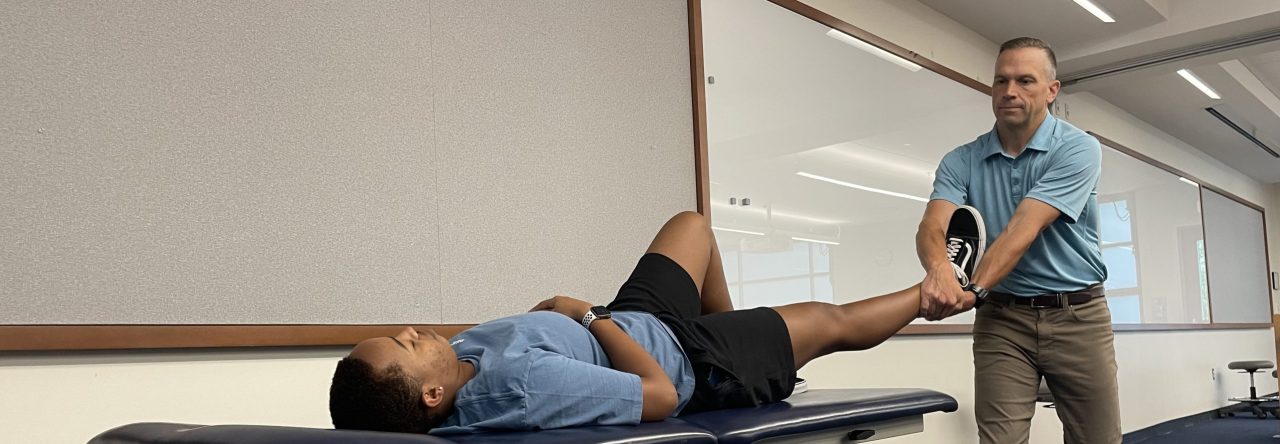Author Names
Lucado, A., Dale, R., Vincent, J., Day, J.
Reviewer Name
Rose O’Donoghue, SPT
Reviewer Affiliation(s)
Duke University School of Medicine, Doctor of Physical Therapy Division
Paper Abstract
Study design: Systematic review. Introduction: No consensus exists as to which are the most effective methods to treat the symptoms associated with lateral elbow tendinopathy (LET). Research has suggested that joint mobilizations may assist in the recovery of patients with LET. Purpose of the study: To determine if joint mobilizations are effective in improving pain, grip strength, and disability in adults with LET. Methods: Searches in 3 databases were performed to identify relevant clinical trials. Reviewers independently extracted data and assessed the methodological quality. Summary measures of quantitative data were extracted or calculated where possible. Appropriate data were pooled for meta-analysis using a random-effects model. Results: A total of 20 studies met the inclusion criteria; 7 were included in the meta-analysis. Studies were broadly classified into 3 groups: mobilization with movement (MWM), Mill’s manipulation, and regional mobilization techniques. Pooled data across all time periods demonstrated a mean effect size of 0.43 (95% confidence interval [CI]: 0.15-0.71) for MWM on improving pain rating, and 0.31 (95% CI: 0.11-0.51) for MWM on improving grip strength, 0.47 (95% CI: 0.11-0.82) for Mill’s manipulation on improving pain rating. A mean effect size of -0.01 (95% CI: -0.27 to -0.26) shows Mill’s manipulation did not improve pain free grip strength. Functional outcomes varied considerably among studies. Pain, grip strength, and functional outcomes were improved with regional mobilizations. Conclusion: There is compelling evidence that joint mobilizations have a positive effect on both pain and/or functional grip scores across all time frames compared to control groups in the management of LET.
NIH Risk of Bias Tool
Quality Assessment of Systematic Reviews and Meta-Analyses
- Is the review based on a focused question that is adequately formulated and described?
- Yes
- Were eligibility criteria for included and excluded studies predefined and specified?
- Yes
- Did the literature search strategy use a comprehensive, systematic approach?
- Yes
- Were titles, abstracts, and full-text articles dually and independently reviewed for inclusion and exclusion to minimize bias?
- Cannot Determine, Not Reported, Not Applicable
- Was the quality of each included study rated independently by two or more reviewers using a standard method to appraise its internal validity?
- Were the included studies listed along with important characteristics and results of each study?
- Cannot Determine, Not Reported, Not Applicable
- Was publication bias assessed?
- Cannot Determine, Not Reported, Not Applicable
- Was heterogeneity assessed? (This question applies only to meta-analyses.)
- Cannot Determine, Not Reported, Not Applicable
Key Finding #1
The pooled data showed that in patients with lateral elbow tendinopathy, mobilization with movement improved pain rating and grip strength (effect size of 0.43 and 0.31 respectively) and Mill’s manipulation improved pain rating but not pain free grip strength (effect size of 0.47 and -0.01 respectively).
Key Finding #2
Pain, grip strength, and functional outcomes were improved with regional mobilizations in patients with lateral elbow tendinopathy.
Key Finding #3
Joint mobilizations have shown to have a positive effect on both pain and/or functional grip scores compared to control groups in patients with lateral elbow tendinopathy.
Please provide your summary of the paper
This study was a systematic review that aimed to address the varying opinions of whether joint mobilizations assist in the recovery of patients with lateral elbow tendinopathy. The purpose of this study in specific was to determine if joint mobilizations are effective in improving pain, grip strength, and disability in adults with lateral elbow tendinopathy. Appropriate data was screened for quality and then pooled for meta-analysis using a random-effects model. The article found 20 studies that met the inclusion criteria and of the 7 that were included, they were classified into 3 groups: mobilization with movement, Mill’s manipulation, and regional mobilization techniques. The pooled data showed that mobilization with movement improved pain rating and grip strength (effect size of 0.43 and 0.31 respectively) and that Mill’s manipulation improved pain rating but not pain free grip strength (effect size of 0.47 and -0.01 respectively). It also showed that pain, grip strength, and functional outcomes were improved with regional mobilizations. Overall, the article concluded that joint mobilizations have shown to have a positive effect on both pain and/or functional grip scores compared to control groups in patients with lateral elbow tendinopathy.
Please provide your clinical interpretation of this paper. Include how this study may impact clinical practice and how the results can be implemented.
This review has its fair share of limitations. While it included higher quality (PEDro of >8/11) studies in the pooled data, it still included some lower/moderate quality ones (PEDro of 5-8/11) in the rest of the evaluation. It also noted that as a whole, the studies that examined mobilization with movement were of lower quality than the studies that examined the Mill’s manipulation and regional mobilization techniques. The study also stated that it was difficult to find studies with a true control group. Overall, it is difficult to account for all the varying factors that are present when performing a systematic review and meta analysis. All being said, this article shows that there is evidence that elbow joint mobilizations improve both pain and functional grip scores in patients with lateral elbow tendinopathy. More research is needed to isolate different subcategories of the condition, improve study quality and effect size, and compare against a true control group. In the meantime, these elbow mobilizations appear to be a safe and effective method to utilize in the clinic for patients with lateral elbow tendinopathy.
